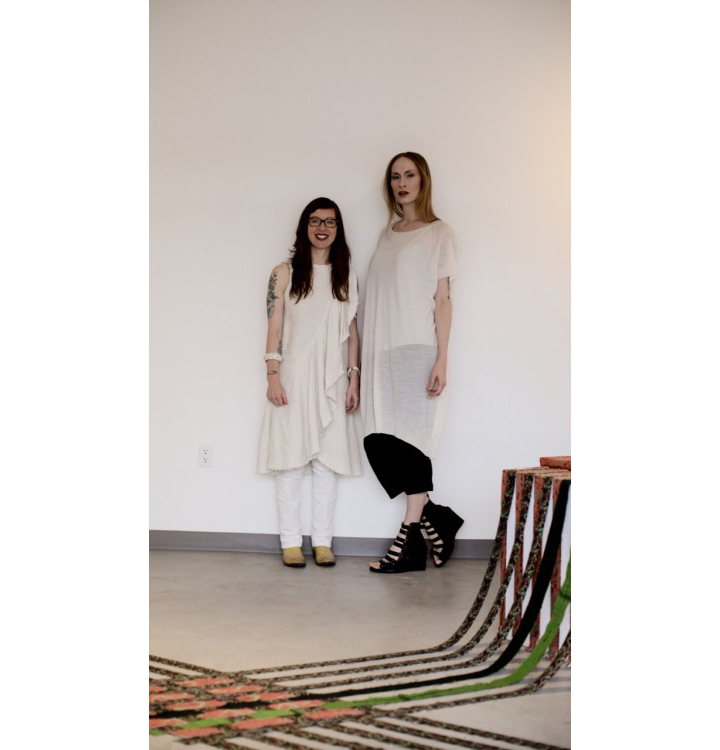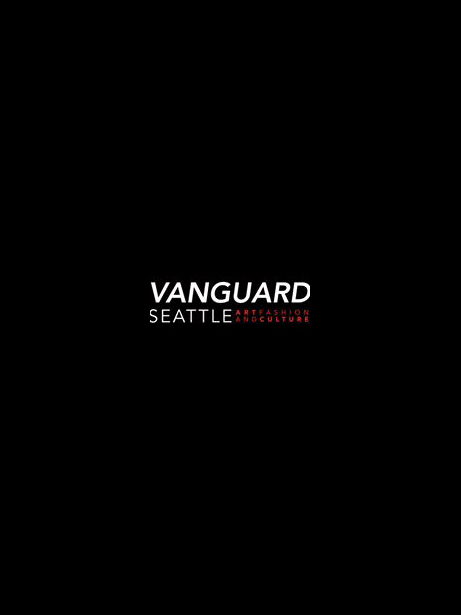Prairie Underground Celebrates a Decade of Fashion and Art
 Written by T.S. Flock // Photos by Tiffany Bri
Written by T.S. Flock // Photos by Tiffany Bri
Prairie Underground recently celebrated ten years of artful fashion designed and made in Seattle. Founded by Camilla Eckersley and Davora Lindner, this local design studio has focused from the start on understated, thoughtful garments that flatter all bodies.
Lindner’s background was as a fine art sculptor. Eckersley grew up in a household of designers. A decade of collaboration has built a loyal fan base that not only sees but feels the fruits of their keen design sense every time one slips into a Prairie Underground garment. Recently, the design team has extended their mission to more actively include other artists to reach their audience and enrich the aesthetics of each collection.
Whether by homage or appropriation, artists are frequently referenced in high fashion, from the designs to editorial shoots. Rarely are artists invited into the design process, as Lindner and Eckersley have committed to do in the last year, first with photographer Frank Correa.
Correa’s signature, hyper-saturated and dramatic style complements the neutral, natural palette of PrU’s clothing. Correa has an eye for costume—and states of undress—but above all he knows how to create scenes that are evocative and narrative using only setting and pose. There is an inescapable theatricality and roleplay in how we dress, whether its in a tee or a beaded gown, and fashion editorials exemplify this. However, most commercial photography seeks to perfect an image seamlessly, while Correa’s style is conspicuously artificial and surreal. One revels in the candy-colored fantasy, then works back toward the real. His work for PrU is more evocative than aspirational.
At a party at the Prairie Underground studio celebrating their tenth anniversary this month, work by Correa and the latest artist collaborator, Rumi Koshino, was on display along with samples from the upcoming fall/winter collection. Regarding this collaboration and how it pertains to the actual business, Lindner explained, “We don’t want it to be marketing in any traditional sense. Rather, we want to support the creation of new artwork. We are working with artists to produce marketing materials specific to a collection, but aside from that, this project is really meant to be another way to communicate with our end-user. It isn’t only marketing based. It isn’t only based in sales. It’s to create a dialog back around the experience that the consumer shares with us.”
In enlisting Rumi Koshino as their next artist collaborator, Lindner and Eckersley have addrssed another problematic aspect of fast-fashion: material waste. There is a lot of physical waste in the fashion industry. It isn’t just the physical scraps, but sometimes whole garments. For example, samples that may be a facsimile for a trade event may be imperfect and not saleable, but they can be used as material by the right artist.
“I did a lot of soft sculpture, so I was very attracted to Rumi’s work and how specific her eye is,” says Lindner. “Her approach is something that fits neatly in our ethos. She discovers things that are really precious and beautiful.”
Koshino works in small scale, too, at times, which is something that aligns with Prairie Underground’s admiration for the unseen, the subtle, the underdog. It is entirely anti-spectacle, more humane. It rebukes the notion that fashion is solely about drawing attention to yourself. The most intimate fashion draws one’s attention to one’s own body in a positive light. The overall ethos of PrU rebukes what Lindner refers to as a lack of “specialness in people’s approach to clothing.”
“We are motivated by the idea of what a garment can mean to you—the different periods in your life when a garment has been special and has provided a sense of comfort or is surrounding an event. All of our clothes are the clothes that women wear in the most intimate moments of their lives. A lot of [customers] find our collection after having a child or going through that process, and thinking about what a garment means to their life, how it affects their body and how they feel about their body.”
As the garment itself becomes a touchstone for one’s lived experiences, the art created in conjunction with the collection deepens that reference and aims to get buyers to consider their use of clothing in different ways, opposed to disposability.
It’s a valuable message to consumers, but the artists have also reaped a reward in learning to find new value for their talents. It’s no secret that most artists have difficulty supporting themselves through their work, in no small part because—like freelancers and independent consultants—it can be difficult to put a price on one’s own work without a frame of reference. PrU’s collaboration with artists models the means by which artists can be rewarded for their talents in fields outside of a fine art and gallery setting.
Whether it is the bearer of the garment or the artist working from it, PrU’s overall model is one of greater agency. Empowerment, awareness, delicacy, kindness, warmth—these values infuse their work. The simplicity of line and material does not belie the complexity and depth behind the craft, but rather emphasize that the most deeply felt and considered experiences do not require a grand gesture. The gentlest touch may say more than words can express, and such tenderness is not a lost art. It is, in fact, the source of new art.
Photos from the tenth anniversary party by Tiffany Bri.
